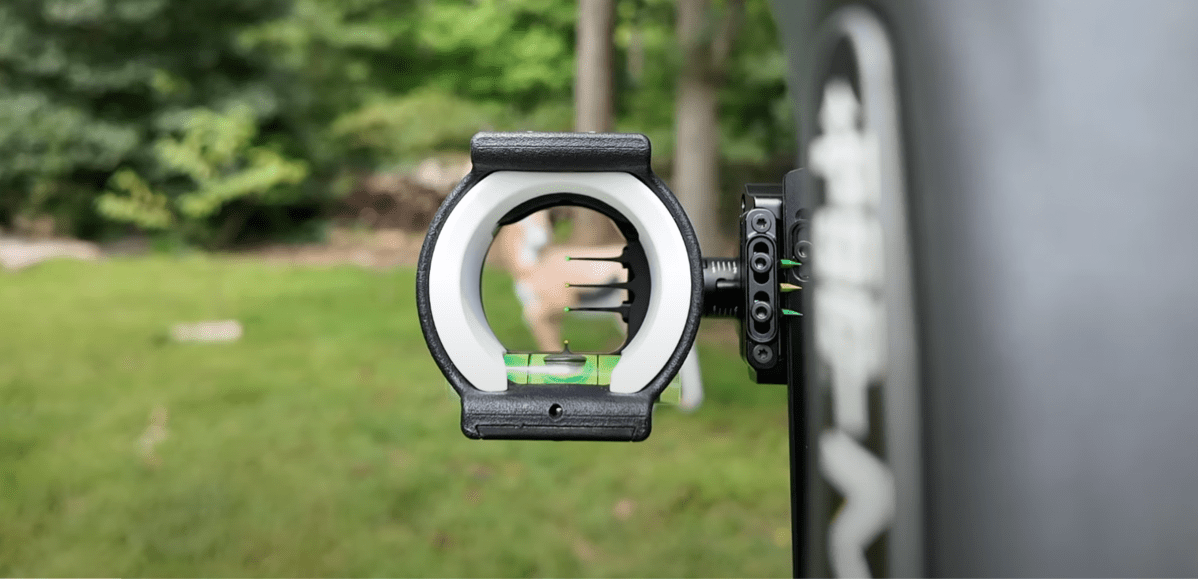The Trump Administration Just Greenlit the Ambler Road Project, Overturning Years of Input from Outdoorsmen

In a press conference held in the Oval Office Monday afternoon, President Trump and Interior secretary Doug Burgum announced the administration’s latest effort to advance the Ambler Road, a proposed 211-mile private industrial corridor in Interior Alaska.
The White House issued a 27-page Statement of Reasons on Trump’s decision to approve an appeal from the Alaska Industrial Development and Export Authority, or AIDEA, an Alaskan governmental agency that’s mandated to pursue economic development in the state.
Trump exercised an obscure provision of ANILCA, or the Alaska National Interest Lands Conservation Act, to approve the appeal and pave the way for the Ambler Project. The proposed road is a 211-mile road that would cut through the wilderness south of the Brooks Range and connect the Dalton Highway to mining deposits. At least four separate mines have been suggested, but there is currently no cap on how much development could happen along Ambler.
Legal experts we spoke with say it’s the first time a president has ever used the provision to unilaterally overrule an agency’s decision.
Burgum mentioned construction of the Ambler Road would begin “next spring.” This was a surprise to Ambler insiders, who note that AIDEA applied for road permits without firm construction plans for building one, and has a lot of work to do before development could even begin. The secretary also announced the federal government would be investing in one of the foreign mining companies with a stake in the Ambler Road.
“The Department of War, the United States government, is making an investment in Trilogy Minerals,” Burgum said. “They’re one of the companies that has mining claims in this area that is a remote wilderness right now, and again, making this investment so that we can ensure we’re securing these critical mineral supplies, and that ownership in that company will benefit the American people.”
Trilogy Metals is a foreign company with Canadian and Australian ownership, and as we’ve reported previously, only one mineral identified at the Ambler Mining District is currently considered a critical mineral.
A 2023 feasibility study by Trilogy Metals stated “it was assumed that delivery of all concentrates would be to a smelter in the Asia Pacific region.” It further noted that “the significance of the Chinese market for concentrate cannot be understated.”
“Rather than improving U.S. mineral security,” points out Hunters and Anglers for the Brooks Range on its site, “development of the Ambler Road would likely entrench our reliance on foreign refining infrastructure.”
“It’s not about saving the United States from foreign adversaries, national security, or any other reason that warrants the destruction to these lands,” Trustees for Alaska senior staff attorney Suzanne Bostrom told OL last week, before this announcement. “This is about foreign mining companies trying to exploit public funds and lands and take those things away from the rest of the country for their own economic benefit. This is a ploy that causes real harm to the land, wildlife, local people, and future generations.”
Monday’s announcement also overrules years of public input gathered by the BLM, which issued a decision in 2024 that found the Ambler Road Project was too risky. Normally, when an administration wants to reverse course on a conservation topic like this (such as the Boundary Waters), it would direct the agency to reevaluate its decision, which would in turn result in a public comment period.
There is no clear path for public input on Monday’s decision.
Trump gave the National Park Service, the Bureau of Land Management, and the Army Corps of Engineers 30 days to reissue the same three permits authorized under the first Trump administration, which are currently still locked up in lawsuits. These would provide right of ways for construction to cross BLM ground connecting the Dalton Highway to the Ambler and through Gates of the Arctic National Preserve.
Most of the Ambler Road is slated for Alaska state land, but the road would also need to secure approval from two Native corporations, NANA and Doyon. Closed-door talks between the two corporations and ADIEA have been ongoing.
Unknown Scale of Development
The road, which has been stalled for years due to environmental, cultural, and subsistence concerns, would access the Ambler Mining District. The district covers roughly 1,100 square miles south of the Brooks Range in northern Alaska. Caribou frequently have trouble navigating similar mining-access roads during their migration, likely due to heavy traffic by ore trucks. “Fugitive dust” from the road also pollutes the surrounding tundra. The Ambler Road proposal includes additional infrastructure such as dozens of bridges, nearly 3,000 culverts, airfields, communications towers, employee housing, and more.
Meanwhile, critics say most local discussion of the Ambler Road has not included enough information about future mineral development. The environmental impact statement from the BLM considered four potential mines, but the state has not put any caps on mines, truck traffic on the road, flights, and other considerations that would impact the tundra and the surrounding villages in those areas. While some Alaskans do want to see the Ambler Road built, public opinion (via public comment periods and Native shareholder surveys) has historically opposed development.
“What scares me is they’re going to build a road that could start a period of industrial expansion in a portion of the Western Arctic Herd’s migratory and winter range,” says Jim Dau, the WAH caribou biologist for the Alaska Department of Fish and Game from 1988 to 2016. “It’s not just the road. So far, the state has limited the discussion to only the road. They won’t talk about what happens after the road. They won’t talk about an industrial mining complex and what that’s going to look like. They won’t talk about all the little smaller access roads between mines that are going to crop up. They’re not saying what its footprint is going to be, or the types of mining. What concerns me about this Ambler Road is what we don’t know.”
The Western Arctic Herd was once the largest caribou herd in Alaska and is a primary food source for subsistence hunters in the region. The region also offers one of the last affordable DIY nonresident caribou hunts on the continent. Since 2003 the herd has declined from its peak of 490,000 animals to an estimated 152,000 in 2023.
Pristine Water, Fish Habitat, and Wild Rivers
Fisheries ecologist Kevin Fraley has been working to sample contaminants like zinc, mercury, copper, and lead at sites along the proposed Ambler Road. His goal has been to establish a baseline, and also understand the health of fish like grayling, pike, and sheefish that serve key subsistence roles and attract sportfishermen. Fraley also sampled sites along the Dalton Highway, which runs beside the Trans Alaskan Pipeline and has a much bigger industrial footprint.
The upshot? The waters along the Western Brooks Range Rivers (where no roads currently exist) are, by and large, pristine. There currently have barely-detectable levels of PFAS, or forever chemicals, in the region, and most fish were well within consumption advisory levels. By comparison, places along the Dalton Highway, including at least one lake that fishermen regularly use, is contaminated with PFAS. Other harmful elements, like lead are also present along the Dalton Highway, though it’s hard to tease out whether these are geologically present or true pollution from the road.
In addition to the road construction itself, the traffic and dust presents a problem for everything from caribou to sensitive Arctic sheefish. A conservative estimate of 168 ore trucks per day would run the Ambler corridor, though this will vary depending on how many mines would be developed along the road. (The BLM environmental impact statement analyzed development with a theoretical four mines, but the state of Alaska has declined to cap it). That does not include worker trucks, shipments, maintenance, and other travel.
“Dust from the road and the ore trucks, all this basically gets up into the air,” says Fraley. That high traffic would cross some 12 rivers and 3,000-plus streams. “All these points are places where contaminates from the road, from the ore trucks could get into the waterways and start migrating downstream and into the food web.”
This concerns many local residents, including outfitters and other Alaskans who rely on outdoor tourism to make a living.
“Sheefish can play a major role locally for subsistence use, and for myself and my business,” says Lew Pagel, a Kotzebue resident who takes about 50 visiting anglers ice fishing for sheefish each year. “So anything catastrophic that happens up the Kobuk River — whether it be mining activity, erosion, a problem with the culverts — is going to have a detrimental effect on the sheefish population in Kotzebue certainly, and the entire region. Professionally, it could completely shut me down.”
Even under the best of circumstances, over time, contaminate levels in fish could rise, ultimately becoming less healthy for subsistence and sport fishermen. There would have to be high levels of contaminates to actually prove toxic to the fish, but contaminates can create what biologists call “sublethal effects,” where fish — pike, sheefish, grayling — become more stressed and less healthy.
Fraley is also concerned about overall increasing levels of sediment that will disrupt water clarity.
“The way I think about it is, what if there’s a mining company that wants to cut a new road right through Glacier National Park or right through the Bob Marshall Wilderness? That’s how this feels for [many of] us Alaskans,” says Fraley. The eastern edge of Ambler would cut through the Gates of the Arctic National Preserve, and bisect Wild and Scenic Rivers like the Kobuk. “Many of these rivers I’ve floated. I’ve had some of the most wild and amazing trips of my life there.”
Read Next: The Ambler Road Project Would Jeopardize One of the Last Great Wilderness Hunts in America
So even though the proposed road would cut through public land, so it would not open access. Unlike the Dalton Highway, which eventually provided public access, there are no plans to ever open the Ambler Road to the public.
Read the full article here









